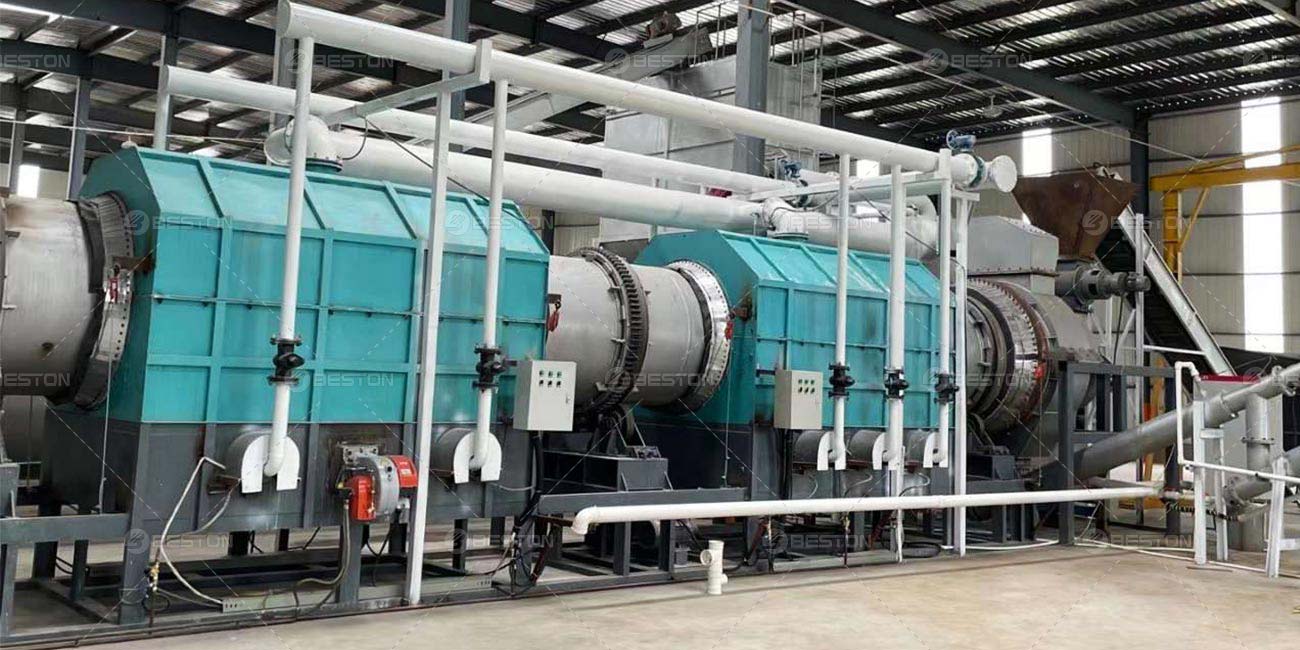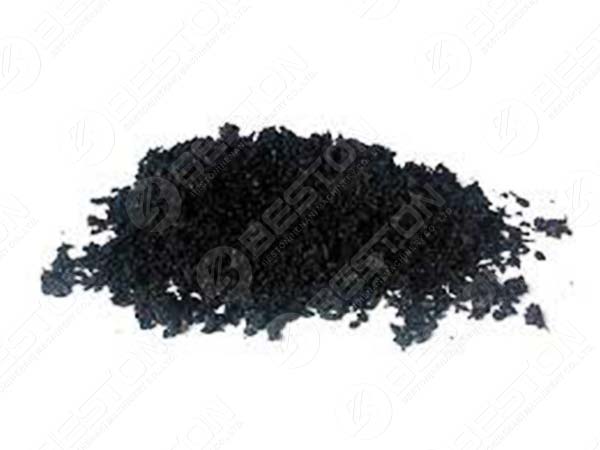As the world grapples with the dual challenges of waste management and climate change, biochar pyrolysis equipment is emerging as a powerful tool in the quest for sustainable solutions. Biochar, a stable form of carbon-rich charcoal, is produced through the pyrolysis of organic material in the absence of oxygen. This process not only offers a method for waste disposal but also creates a valuable product that enhances soil health and sequesters carbon. This article explores the latest advancements in biochar pyrolysis equipment, its economic and environmental benefits, and the challenges and opportunities facing this burgeoning industry.
The Basics of Biochar Pyrolysis
Biochar production involves heating organic materials, such as agricultural residues, wood chips, and other biomass, in a pyrolysis reactor at temperatures typically ranging from 400°C to 700°C. The absence of oxygen prevents combustion, resulting in the thermal decomposition of the biomass into biochar, syngas, and bio-oil. Each of these products has significant utility, but biochar stands out for its unique ability to improve soil quality and sequester carbon for long periods.

Advances in Biochar Pyrolysis Equipment
Technological innovations in biochar pyrolysis equipment are making biochar production more efficient, scalable, and environmentally friendly. Modern pyrolysis systems are designed to optimize the yield and quality of biochar while minimizing emissions and energy consumption.
1. Continuous Pyrolysis Systems: Unlike batch systems, which process biomass in discrete batches, continuous pyrolysis systems allow for the ongoing feed of biomass and extraction of biochar. This enhances efficiency and throughput, making it suitable for large-scale operations. Continuous systems are particularly beneficial for industries that generate large amounts of organic waste, such as agriculture and forestry.
2. Mobile Pyrolysis Units: Mobile pyrolysis units are gaining popularity, especially in regions where transporting biomass to a central facility is impractical. These units can be transported to the site of biomass generation, reducing logistics costs and carbon footprint. They are ideal for remote or rural areas where waste management infrastructure is limited.
3. Advanced Reactor Designs: Innovations in reactor design, such as auger reactors and rotary kilns, have improved the control over pyrolysis conditions. This results in higher yields of high-quality biochar with desired properties. For instance, auger reactors provide uniform heating and efficient mixing, leading to consistent biochar quality.
4. Integration with Renewable Energy: Integrating pyrolysis equipment with renewable energy sources, such as solar or wind, can further reduce the carbon footprint of biochar production. Solar-powered pyrolysis units are being developed to utilize abundant solar energy, particularly in regions with high solar irradiance.
5. Emission Control Technologies: To address environmental concerns, modern pyrolysis equipment is equipped with advanced emission control systems. These systems capture and treat any off-gases and particulate matter, ensuring that the process meets stringent environmental standards. This is crucial for gaining regulatory approval and community acceptance.
Economic Benefits of Biochar Pyrolysis Equipment
Investing in biochar pyrolysis equipment can yield substantial economic returns through various revenue streams and cost savings.
1. Waste Management Cost Reduction: For industries and municipalities, coconut shell charcoal making machine offers an efficient way to manage organic waste. Instead of incurring high costs for waste disposal, they can convert waste into valuable biochar. This not only reduces landfill use but also lowers waste management expenses.
2. Revenue from Biochar Sales: Biochar has a growing market, driven by its benefits for soil health, agricultural productivity, and carbon sequestration. Farmers and gardeners are willing to pay a premium for high-quality biochar, providing a steady revenue stream for producers.
3. Energy Production: The syngas produced during pyrolysis can be used as a fuel for generating heat and electricity. This can offset energy costs for the pyrolysis plant or even provide surplus energy that can be sold to the grid. Additionally, bio-oil can be refined into valuable chemicals or used as a renewable fuel.
4. Carbon Credits and Environmental Incentives: Biochar production is recognized for its potential to sequester carbon, and producers can earn carbon credits under various environmental schemes. These credits can be sold in carbon markets, generating additional revenue. Furthermore, governments and organizations offer grants and subsidies for projects that contribute to carbon reduction and sustainability.
Environmental and Agricultural Benefits
The environmental and agricultural advantages of biochar are driving its adoption across the globe.
1. Soil Health Improvement: Biochar enhances soil structure, increases water retention, and provides a habitat for beneficial microorganisms. This leads to healthier plants and higher crop yields. Biochar’s porous nature allows it to retain nutrients and moisture, making it particularly valuable in arid and semi-arid regions.
2. Carbon Sequestration: One of the most significant benefits of biochar is its ability to sequester carbon. When applied to soil, biochar remains stable for hundreds to thousands of years, effectively locking away carbon that would otherwise contribute to atmospheric CO2 levels. This makes it a powerful tool in mitigating climate change.
3. Waste Reduction: Biochar pyrolysis reduces the volume of organic waste, converting it into a stable and useful product. This contributes to a circular economy where waste is repurposed rather than discarded.
4. Pollution Mitigation: Biochar can absorb and immobilize pollutants, including heavy metals and organic contaminants, in the soil. This makes it useful for land remediation and improving soil health in polluted areas. Get competitive charcoal making machine price.
Challenges Facing the Biochar Industry
Despite the numerous benefits, the biochar industry faces several challenges that must be addressed to ensure its widespread adoption and success.
1. High Initial Capital Investment: The upfront cost of pyrolysis equipment and infrastructure can be prohibitive, especially for small and medium-sized enterprises. Access to financing and government incentives is crucial to overcome this barrier.
2. Market Development: The biochar market is still in its nascent stage, and there is a need for increased awareness and education among potential users. Building a robust market requires demonstrating the benefits of biochar through research and field trials.
3. Regulatory Hurdles: Compliance with environmental and safety regulations can be complex and costly. Navigating these regulations requires expertise and investment in appropriate technologies and practices.
4. Feedstock Variability: The quality and availability of biomass feedstock can vary, affecting the consistency and quality of biochar. Developing reliable supply chains and standardizing feedstock characteristics are essential for stable production.
Case Studies and Success Stories
Several projects around the world illustrate the potential and impact of biochar pyrolysis equipment.
1. Pacific Biochar in the United States: Pacific Biochar, based in California, has developed a successful model for biochar production and application. Their facility processes agricultural waste into high-quality biochar, which is then sold to vineyards and orchards to enhance soil health. The project has received support from government grants and carbon credit programs.
2. Cool Planet in Kenya: Cool Planet, a social enterprise in Kenya, utilizes mobile pyrolysis units to convert agricultural residues into biochar. The biochar is used by local farmers to improve soil fertility and increase crop yields. This initiative not only addresses waste management but also supports sustainable agriculture and rural development.
3. Carbon Gold in the United Kingdom: Carbon Gold has pioneered the use of biochar in horticulture and agriculture in the UK. Their biochar products are enriched with beneficial microbes and nutrients, providing a comprehensive soil amendment solution. Carbon Gold’s success has been driven by extensive research and collaboration with agricultural institutions.
Future Outlook
The future of biochar pyrolysis equipment looks promising as technology continues to evolve and awareness of its benefits grows. Key trends shaping the industry include:
1. Technological Innovation: Ongoing research and development are expected to yield more efficient, cost-effective, and scalable pyrolysis systems. Innovations in reactor design, automation, and integration with renewable energy will enhance the feasibility of biochar production.
2. Policy Support: Governments worldwide are recognizing the role of biochar in achieving climate and sustainability goals. Increased policy support, including subsidies, grants, and carbon credits, will spur investment and adoption.
3. Market Expansion: As the biochar market matures, new applications and markets will emerge. Beyond agriculture, biochar’s use in construction materials, water filtration, and carbon sequestration will drive demand.
4. Collaboration and Partnerships: Collaboration between industry stakeholders, research institutions, and governments will be crucial for advancing biochar technology and market development. Public-private partnerships can facilitate knowledge sharing, innovation, and scaling of successful models.
Conclusion
Biochar pyrolysis equipment represents a transformative technology with the potential to address some of the most pressing environmental and agricultural challenges of our time. By converting waste into valuable biochar, this technology offers a sustainable solution for waste management, soil health improvement, and carbon sequestration. While challenges remain, the ongoing advancements in technology, policy support, and market development are paving the way for a bright future for the biochar industry. As the world continues to prioritize sustainability and climate action, biochar pyrolysis equipment of Beston Group will play a critical role in creating a more sustainable and resilient planet.
